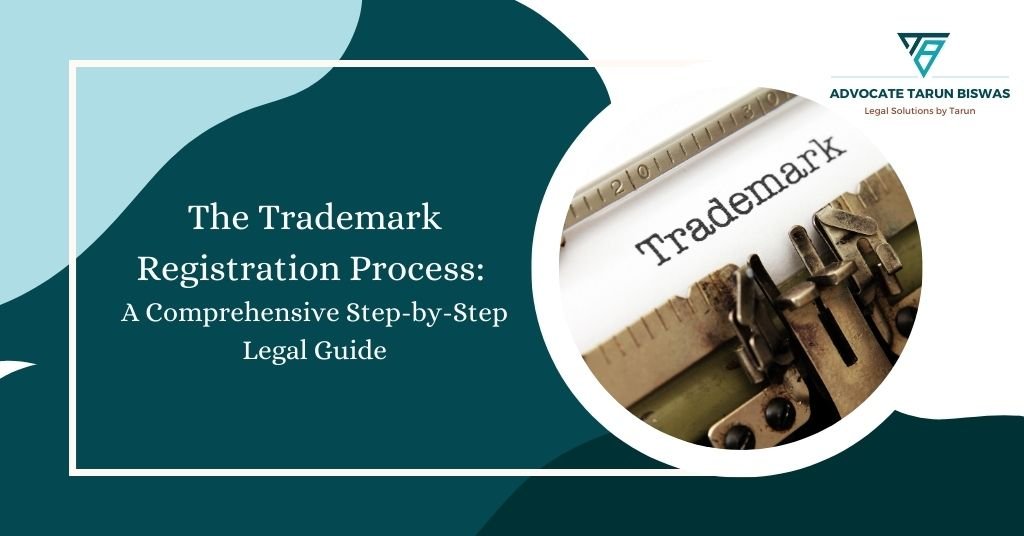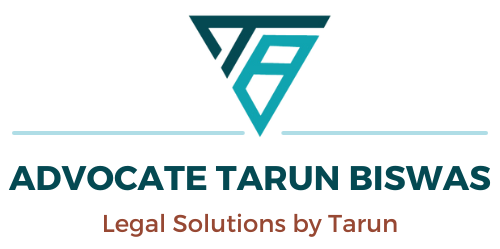
In the competitive business world, protecting intellectual property is crucial. Trademark Registration is a key tool for safeguarding brand identity, allowing businesses to set their products and services apart in the market. This guide provides a straightforward, step-by-step approach to the trademark registration process in India, offering valuable insights for professionals and business owners to understand and navigate trademark law effectively. Focusing on the practical aspects of trademark registration serves as a useful resource for those seeking to protect their brand identity through legal means.
Step-By-Step Trademark Registration Process in India
Step 1: Filing the Trademark Registration Application
After completing a thorough trademark search and confirming availability, the next step in trademark registration is submitting the application. This formal process must strictly follow the guidelines set by the Office of the Controller General of Patents, Designs and Trade Marks (CGPDTM) to ensure proper processing.
Applicants can file for trademark registration online through the IP India website, which provides a straightforward interface. It’s crucial to accurately fill out all required sections of the application form, including:
- Applicant details
- Clear trademark representation
- Specific goods or services classes under the Nice Classification
A detailed description of the goods or services linked to the trademark is necessary for accurate classification and review. Paying the required fees is essential and varies based on the number of classes and applicant type (individual, startup, or established entity). Ensuring all information is correct and complete at this stage is vital, as errors or missing details can cause delays or rejections in the trademark registration process.
Hiring a qualified trademark attorney or agent can significantly help in carefully preparing and submitting the application, increasing the chances of a smooth and successful trademark registration.
Step 2: Examination of the Trademark Registration Application
After submitting a Trademark Registration application, the Office of the Controller General of Patents, Designs and Trade Marks (CGPDTM) conducts a thorough review. This examination is crucial in the trademark registration process, ensuring compliance with the Trade Marks Act, 1999.
A Trademark Examiner assesses the application for:
- Distinctiveness: The mark must set apart one entity’s goods or services from others. Generic or purely descriptive marks are usually rejected unless they’ve gained distinctiveness through extensive use.
- Non-Descriptiveness: Marks that mainly describe the goods or services may be refused unless they’ve acquired a secondary meaning in the market.
- Non-Deceptiveness: The trademark must not mislead about the nature, quality, or origin of the goods or services.
- Prohibited Marks: The examiner checks for symbols, emblems, or terms prohibited by the Act, such as those affecting national security, religious sentiments, or public morality.
If issues arise, the examiner issues a First Examination Report (FER). This document outlines objections and provides a deadline for the applicant’s response. Addressing the FER properly is essential to move forward with the trademark registration process. This may involve amending the application, providing evidence of distinctiveness, or addressing legal concerns.
Failing to respond to the FER within the given timeframe can lead to the application’s abandonment. Therefore, it’s advisable to work with a qualified trademark attorney during this phase to improve the chances of successful registration.
Step 3: Publication of the Trademark Registration in the Trademark Journal
After the Trademark Registration application passes initial review, the next key step is publishing the trademark in the official Trademark Journal. This public notice allows third parties to object if they believe the trademark infringes on their rights or could cause confusion.
The Trademark Journal, available to the public, lists important details like the applicant’s name, trademark image, relevant goods or services classes, and publication date. This openness helps maintain the trademark system’s integrity by addressing potential conflicts early.
The opposition period usually lasts four months from the publication date. During this time, anyone who thinks the proposed trademark violates their rights or might cause confusion can file an opposition. Reasons for opposing may include similarity to existing trademarks, lack of distinctiveness, or public policy violations.
Applicants should regularly check the Trademark Journal during this period. If someone opposes their trademark, they must respond quickly and effectively, providing evidence and legal arguments to support their trademark’s validity. Hiring an experienced trademark lawyer can be helpful in handling oppositions, as they know how to build strong defences and negotiate settlements if needed.
Not addressing oppositions properly can lead to trademark registration refusal. Therefore, paying close attention to the publication phase and being ready to handle challenges is crucial for moving the registration process forward successfully.
Step 4: Handling Opposition to the Trademark Registration
After publication in the Trademark Journal, the trademark registration process in India enters a crucial stage: the opposition period. This four-month window allows third parties to challenge the registration if they believe it infringes on existing rights or could cause market confusion.
Key Aspects of Trademark Opposition:
- Grounds for Opposition:
- Similarity to existing trademarks
- Lack of distinctiveness
- Deceptive or misleading nature
- Violation of public policy or morality
- Opposition Procedure:
- Opponents file a petition
- Registrar notifies the applicant
- Applicant responds within 30 days
- Legal Strategy:
- Hiring a trademark attorney is vital
- Lawyers help build strong defenses and gather evidence
- Negotiations may resolve disputes without formal proceedings
- Possible Outcomes:
- Opposition withdrawal
- Dismissal of opposition
- Hearing and adjudication
- Refusal of registration
The opposition phase is essential in ensuring that new trademark registrations don’t infringe on existing rights. It allows businesses to protect their intellectual property and maintains fairness in the marketplace. Applicants should be prepared to defend their trademark’s uniqueness and validity if challenged.
For a smooth trademark registration process, it’s crucial to conduct thorough research beforehand and seek professional legal advice. This approach can help avoid potential conflicts and increase the chances of successful registration.
Step 5: Issuance of the Trademark Registration Certificate
After resolving any objections and completing all required steps, the final stage of trademark registration is getting the registration certificate from the Office of the Controller General of Patents, Designs and Trade Marks (CGPDTM). This marks the end of the trademark registration process, giving the applicant legal ownership and exclusive rights to the registered trademark.
Final Check and Approval:
The Registrar does a last review of the trademark registration application after overcoming any objections and meeting all legal requirements. This includes making sure all steps were followed correctly and the trademark meets the criteria set by the Trade Marks Act, 1999. The Registrar confirms the trademark doesn’t infringe on existing rights and follows public policy standards.
Getting the Registration Certificate:
Once the application passes the final check, the Registrar officially records the trademark registration and issues a certificate to the applicant. This certificate proves the applicant’s exclusive rights to use the trademark for specific goods or services. It includes important details like the trademark image, the classes of goods or services covered, the registration date, and how long it’s valid.
Legal Benefits of Registration:
The trademark registration certificate provides several legal advantages:
- Exclusive Use: The owner can use the trademark exclusively in the market, stopping others from using it without permission.
- Legal Assumption: The registration is seen as proof of the trademark’s validity and the owner’s rights, making it easier to enforce.
- Right to Legal Action: The owner can take legal action against those who infringe on the trademark, seeking remedies like injunctions and damages.
- Increased Brand Worth: A registered trademark adds value to the brand, helping its success and market position.
After Registration Duties:
After getting the trademark registration certificate, the owner must follow trademark laws to keep the registration valid:
- Renewal: The registration lasts for ten years from the application date and can be renewed every ten years. Timely renewal is crucial to keep the registration active.
- Watching and Enforcing: The owner should watch the market for possible infringements and take action to protect the trademark’s uniqueness and legal rights.
- Using the Trademark: The owner must use the trademark regularly and genuinely in business to maintain its registered status. Not using it could lead to challenges against its validity.
Step 6: Renewal and Maintenance of the Trademark Registration
Obtaining a trademark registration is just the beginning. To keep your trademark legally protected and enforceable, you must renew and maintain it regularly. In India, trademark registrations last for ten years from the application date. You can renew them indefinitely for additional ten-year periods if you follow the proper procedures.
Renewal Process:
- Filing: Submit a renewal application to the Office of the Controller General of Patents, Designs and Trade Marks (CGPDTM) within six months before your registration expires. Late renewals may cost more and require explanations.
- Requirements: Pay the renewal fee, which depends on how many classes your trademark covers. Provide evidence that you’re still using the trademark in commerce.
- Documentation: Keep accurate records of your trademark use, including marketing materials and sales data. You might need these during renewal to prove your trademark is still valid and distinctive.
Maintaining Your Trademark Rights:
- Active Use: Use your trademark consistently for the goods or services it covers. If you don’t use it for five years straight, someone could try to cancel it for abandonment.
- Monitoring: Watch the market for potential infringements. Address unauthorized uses quickly to protect your trademark’s distinctiveness and legal status.
- Updating Records: Promptly inform the CGPDTM of any changes to your trademark, such as new ownership or address. Accurate records help maintain your registration and make enforcement easier.
Legal Aspects of Renewal and Maintenance:
- Ongoing Protection: Regular renewal and maintenance reinforce your legal rights, allowing you to effectively stop infringers.
- Avoiding Lapses: Timely renewal prevents your registration from expiring, which could lead to losing your exclusive rights.
- Building Brand Value: Consistently maintaining and enforcing your trademark helps strengthen your brand’s reputation and market position.
By following these renewal and maintenance practices, you can ensure your trademark registration remains strong and continues to protect your brand effectively.
Conclusion
Trademark registration in India is a complex process that requires careful attention to legal rules and procedures. This guide has outlined the key steps, from searching for existing trademarks to maintaining your registration. Each part of the process, including filing the application, examination, publication, handling objections, and getting the registration certificate, is crucial for protecting your brand’s identity and intellectual property. Getting a trademark registration gives you exclusive rights to use your mark and helps defend your brand in the marketplace. It’s important to keep your registration current to maintain its legal strength and your brand’s commercial value.
In today’s business world, where brand identity is key to success, well-executed trademark registration is essential. It forms the basis for brand recognition, customer trust, and long-term growth. Investing in a sound trademark registration process is crucial for any business looking to establish and protect its unique identity in India.
Why Choose Advocate Tarun Biswas for Your Trademark Registration Needs
Picking the right lawyer is key to successful trademark registration. Advocate Tarun Biswas is a leading expert in Indian intellectual property law, offering top-notch expertise and client-focused trademark registration services. With over ten years of specialized experience, Advocate Biswas has guided many clients through the trademark registration process.
His approach includes thorough trademark searches, precise application filings, and effective handling of objections. Committed to excellent client service, he ensures clear communication, timely updates, and responsive support throughout the process. Beyond registration, he offers a range of intellectual property services, including trademark enforcement and infringement litigation. Choosing Advocate Tarun Biswas for your trademark registration needs ensures you get expert legal advice, strategic insights, and strong support to protect your brand effectively.
